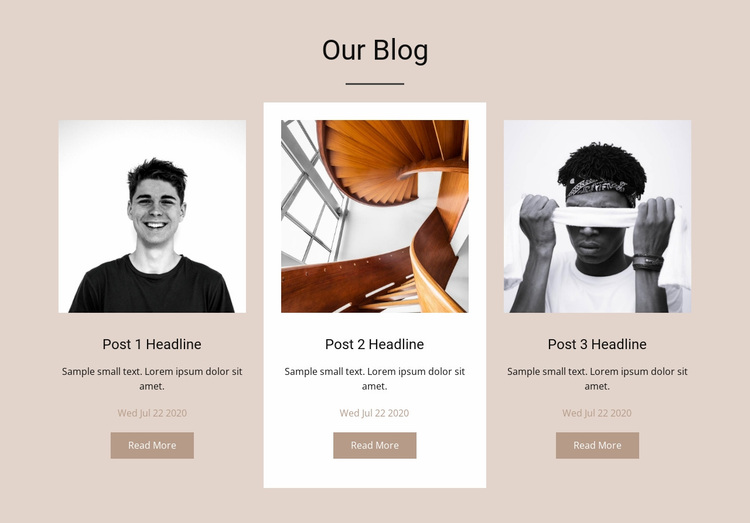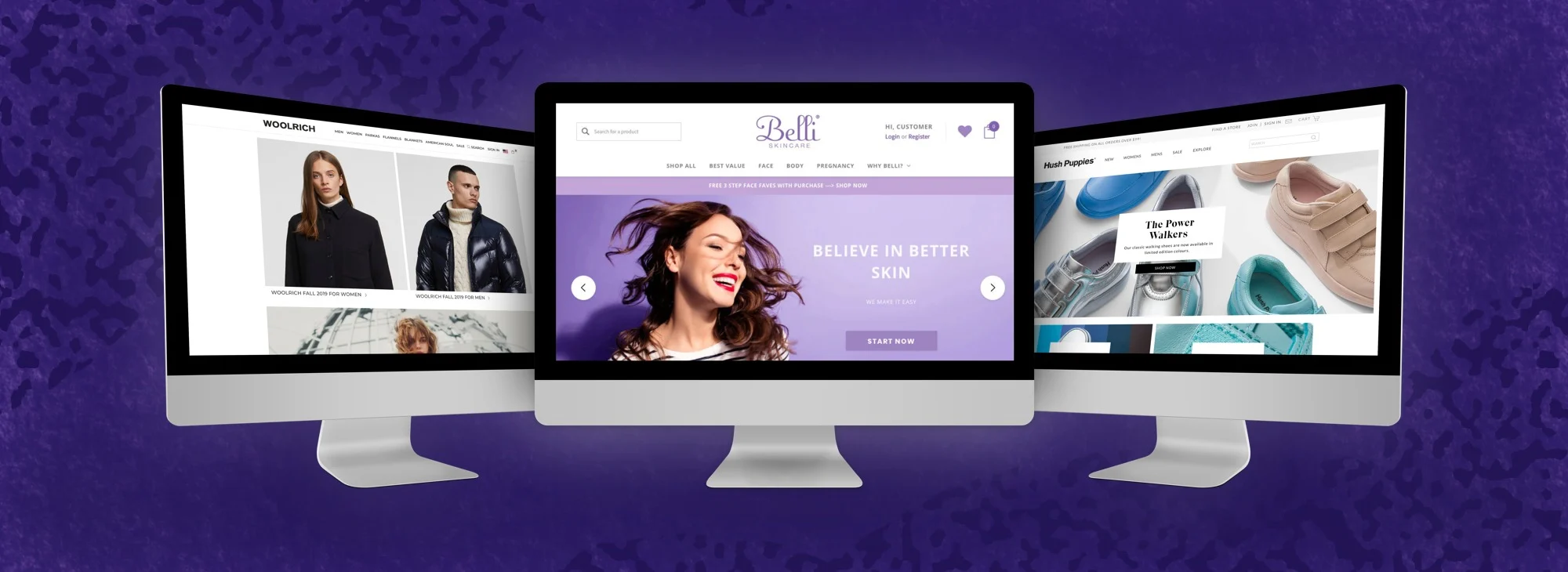Why Website Design is Crucial for Your Business Growth and Success
Wiki Article
The Ultimate Guide to Modern Website Layout Trends
In the ever-evolving digital landscape, contemporary website design patterns play a vital function fit individual experience and interaction. From the surge of minimalist design principles that prioritize simpleness to the effect of vibrant typography in defining brand identification, each element contributes to a cohesive on the internet presence. The focus on mobile-first and receptive techniques, alongside ingenious microinteractions, better boosts functionality. The expanding emphasis on lasting web style techniques shows a commitment to environmental obligation. These trends collectively elevate essential concerns about the future of efficient website design and what it indicates for organizations and customers alike.Minimalist Layout Principles
Minimalist design principles emphasize the concept that much less is extra, supporting for simplicity and capability in aesthetic communication. This method strips away unneeded elements, focusing rather on important elements that communicate the intended message successfully. By prioritizing quality, minimalist design boosts user experience, permitting site visitors to browse internet sites easily.
Core tenets of minimalist design include making use of enough white space, which creates a feeling of balance and company. This unfavorable room not just guides the audience's attention to crucial elements however additionally promotes a calming visual environment. Additionally, a restricted shade palette is typically employed, using soft tones or single plans to maintain aesthetic cohesion and prevent overwhelming the customer.
Typography plays a crucial role in minimal style, where readable fonts are selected for their simplicity and efficiency in communicating material. Images and graphics are made use of sparingly, making sure that they offer a function rather than sidetrack from the general message. Ultimately, minimal style principles cultivate a concentrated atmosphere that motivates customers to engage with the content, improving the general effectiveness of contemporary site style. This pattern shows an expanding admiration for thoughtful, user-centric appearances in digital spaces.
Bold Typography Choices
Accepting bold typography choices has come to be a defining characteristic of modern-day website style, as it effectively catches focus and conveys strong messaging. Designers are significantly making use of typography not just as a functional aspect however as a crucial aesthetic part that boosts the total visual and customer experience.
In addition, the association of vibrant typography with minimal style principles enables striking contrasts, boosting readability while maintaining aesthetic appeal. Using whitespace around bold message better emphasizes its importance, ensuring that the message resonates with the target market.
As electronic landscapes become more competitive, leveraging strong typography enables brand names to differentiate themselves and leave an enduring impression. The mindful option of font styles and their application can stimulate feelings, establish tone, and drive activity, making vibrant typography a vital tool in modern-day web site design. Inevitably, it is an effective method to improve narration and guarantee that crucial messages are not just seen but additionally felt.
Responsive and Mobile-first Style
Receptive and mobile-first style has arised as a critical principle in modern-day website development, mirroring the enhancing dependence on smart phones for accessing on-line content. As user habits changes towards mobile surfing, designers need to prioritize creating experiences that adjust flawlessly across numerous display sizes and resolutions.A responsive layout makes certain that a website instantly changes its layout, images, and capability based on the device being used. Mobile-first layout supporters for creating web sites initially for smaller sized displays, consequently scaling up to larger displays.
Applying receptive and mobile-first principles not just satisfies individual choices however likewise aligns with seo (SEARCH ENGINE OPTIMIZATION) methods. Significant online search engine, like Google, prioritize mobile-friendly websites in their rankings, making it imperative for services to embrace these style strategies. In a competitive digital landscape, embracing mobile-first and responsive style is not simply an option; it is vital for making sure accessibility and engagement with a diverse audience.
Engaging Microinteractions
Microinteractions play a pivotal role in improving individual engagement and general web site experience, especially in the context of receptive and mobile-first style. These refined design elements give immediate responses to individuals, making communications extra delightful and instinctive. Examples include button animations, notice signals, and packing indicators, which not just overview customers however likewise develop a sense of connection with the user interface.Integrating appealing microinteractions can substantially enhance usability by reducing cognitive lots. When users receive visual or acoustic feedback upon doing activities, such as clicking a switch or submitting a kind, they really feel more positive in their choices. This fosters a smoother navigating experience, inevitably increasing individual retention.

As site layout trends remain to develop, the value of microinteractions can not be overstated. They function as the refined yet effective touchpoints that transform normal interactions right into phenomenal experiences, consequently raising the general effectiveness of modern-day web design.
Lasting Web Style Practices
Sustainable website design techniques are coming to be significantly essential as the digital landscape grows and ecological problems climb. Developers and designers are recognizing their obligation to produce internet sites that not just serve individual needs yet additionally lessen ecological effect. This technique includes several key techniques.To start with, enhancing energy usage is critical. Sites ought to be developed to fill promptly and successfully, which reduces web server energy usage and enhances customer experience. Strategies such as image compression, decreasing HTTP demands, and using modern-day coding practices add substantially to this goal.
Secondly, picking environment-friendly hosting companies is vital - website design. Several hosting firms are now powered by sustainable power sources, making it possible for web sites to run in a much more lasting way. This option reflects a dedication to lowering carbon footprints
Moreover, click over here now taking on a minimalist style can enhance sustainability. Fewer aspects on a web page result in much less information transfer, which not only quickens loading times but likewise conserves sources.
Last but not least, promoting electronic accessibility makes sure that websites get to a broader audience without unnecessary bloat, aligning user experience with ecological duty. By incorporating these lasting techniques, web designers can contribute positively to both customer interaction and the planet's wellness.
Conclusion
In summary, contemporary web site design fads emphasize the combination of minimalist concepts, bold typography, and responsive design to improve individual experience. Engaging microinteractions add to memorable interactions, while sustainable techniques advocate for environmentally aware advancement. Jointly, these components not just raise aesthetic charm however also improve functionality, ensuring that internet sites are both aesthetically striking and user-friendly. Adopting these patterns is discover here vital for producing impactful electronic experiences that reverberate with individuals in a progressively competitive on-line landscape.In the ever-evolving electronic landscape, modern website layout patterns play an essential duty in forming customer experience and interaction. By focusing on clarity, minimal design enhances individual experience, permitting site visitors to navigate sites effortlessly.
Ultimately, minimalist style principles grow a concentrated setting that motivates users to engage with the material, boosting the general performance of modern-day web site layout.Microinteractions play a pivotal function in enhancing individual involvement and overall internet site experience, specifically in the context of mobile-first this page and responsive layout.In recap, modern site layout patterns highlight the assimilation of minimalist principles, vibrant typography, and responsive style to boost customer experience.
Report this wiki page